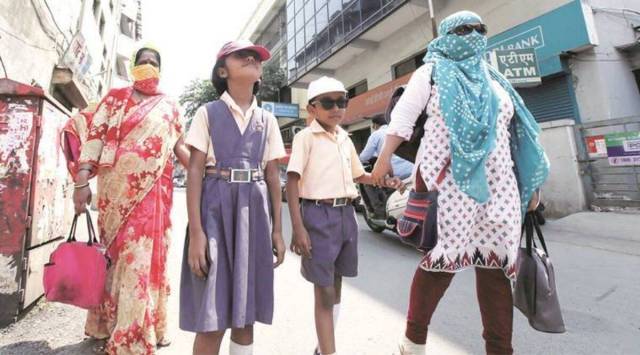Stay updated with the latest - Click here to follow us on Instagram
Delhi sees 13 heatwave days so far, but heat action plan yet to be implemented
No heat action plan for Delhi is available on the Delhi government department websites, which was confirmed by a senior official of the environment department.
 The NDMA guidelines say that the state should appoint a head or nodal officer at the state or district level and depute an agency to oversee the heat action plan.
The NDMA guidelines say that the state should appoint a head or nodal officer at the state or district level and depute an agency to oversee the heat action plan. Despite the scorching summers the city has witnessed, Delhi is yet to put a heat action plan in place to coordinate its response to heatwaves. Delhi-NCR saw an early start to the summer this year, and temperatures soared in April. The Safdarjung weather observatory has recorded 13 heatwave days so far.
The National Disaster Management Authority (NDMA) had issued guidelines for states and cities to prepare heat action plans in October 2019. According to the NDMA’s records, Delhi does not have a specific heat action plan, but dos and don’ts are circulated to the health department.
“We are following the instructions… the guidelines or SOPs issued by the NDMA on the subject,” said Chief Secretary Naresh Kumar. On whether there is a specific heat action plan for the city, he said, “That is there… including a nodal officer and the responsibilities of the various stakeholders.” He directed further questions to Health Secretary Amit Singla, who did not respond to calls and messages.
No heat action plan for Delhi is available on the Delhi government department websites, which was confirmed by a senior official of the environment department.
“Delhi doesn’t have a heat action plan. These are emergency plans… what sort of infrastructural support should be made available to citizens so that the death toll is not high. These plans usually involve reserving a certain percentage of beds in hospitals for heat-related illnesses, making sure that drinking water is available on the streetside,” said Avikal Somvanshi, senior programme manager, Urban Lab, Centre for Science and Environment.
In addition to heatwave-related guidelines issued by the NDMA, city-level action plans are also important, experts said. Somvanshi said that local administrations would be best placed to take action based on the situation on the ground.
Heatwave conditions may also be different in different areas, he pointed out. “Heatwave conditions around Lodhi Road, where there is a green cover, may not be as bad as Pitampura where conditions could be worse because of the kind of infrastructure and urban heat islands,” he said.
Anup Kumar Srivastava, an expert on heatwaves, who works as a consultant with the NDMA, said a city-level plan is a necessity for Delhi. “We have already seen heatwaves in March and April, and we could witness more. The city has a large population and a large number of workers who come here to work are out on construction sites…” he said.
While the guidelines have been broadly identified by the NDMA, a city-level plan can help define roles and responsibilities more clearly and make definite arrangements, he added. Guidelines on preparing action plans were released by the NDMA first in 2016, and were revised in 2017 and 2019, he said.
The NDMA guidelines say that the state should appoint a head or nodal officer at the state or district level and depute an agency to oversee the heat action plan. It also states that vulnerable areas and populations are to be identified, adding that heat action plans are to be assessed after each heat season, and updated as required. “Long-term planning for heat resilience infrastructure” and “rescheduling of work hours for employees in different sectors” are also part of the guidelines.
Response at the district level
Vishwendra, District Magistrate, Southeast Delhi, said the response is along two lines – preventive and curative. The preventive measures involve IEC (information, education, communication) aspects. A meeting was held recently at the district level and at all medical facilities in the district, and the Chief District Medical Officer was directed to get IEC material distributed, he said. Curative measures involve dealing with heat-related illnesses. Health facilities in the districts have been geared up, he added.






